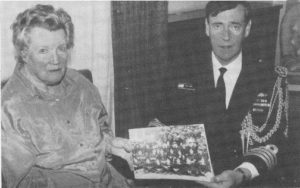- Author
- A.N. Other
- Subjects
- History - general, Biographies and personal histories, Ship design and development
- Tags
-
- RAN Ships
- None noted.
- Publication
- September 1996 edition of the Naval Historical Review (all rights reserved)
The awards and decorations of an Australian Rear Admiral who became one of the most innovative naval officers of his time have been donated to the Royal Australian Navy by his daughter.
Rear Admiral John Dumaresq was born in Australia, but joined the Royal Navy in 1886. He transferred to the RAN in 1919 as a Commodore in HMAS Australia, for the battle cruiser’s return voyage to Australia after WW I.
He was promoted rear admiral in 1921, becoming the first Australian-born officer to hold that rank and to command the Australian Squadron as it was then known. He is said to have brought to the small but professional service very high standards of discipline and competence. Rear Admiral Dumaresq devoted much of his time to the science of naval warfare. He invented a calculating instrument by which the rate of movement of enemy ships could be determined within seconds. This instrument, named the Dumaresq, gave naval gunnery an unprecedented accuracy.

Dumaresq became probably the first naval officer to develop the zig-zag system of bomb avoidance, and was also closely involved with the new concept of launching aircraft from ships.
During his distinguished career, Rear Admiral Dumaresq was appointed a Member of the Royal Victorian Order (and subsequently a Commander of the Royal Victorian Order), created a Companion of the Order of the Bath and awarded the Order of St Catherine of Russia. He died of pneumonia in 1922 at the age of just 49. His widow settled in England with their two sons and three daughters.
Rear Admiral Dumaresq’s only surviving daughter, Mrs Lucia Donaldson-Craig of Maidstone, Kent, recently decided to present the RAN with her father’s orders and awards, photographs, epaulettes, and other memorabilia of his outstanding career.




